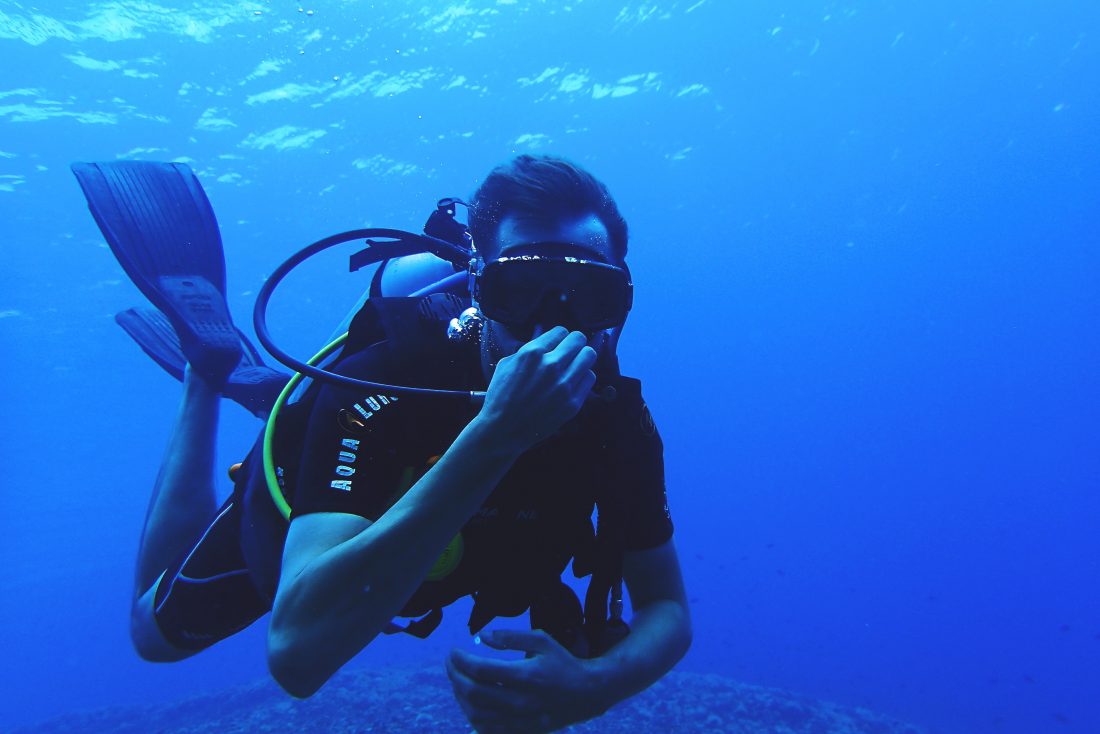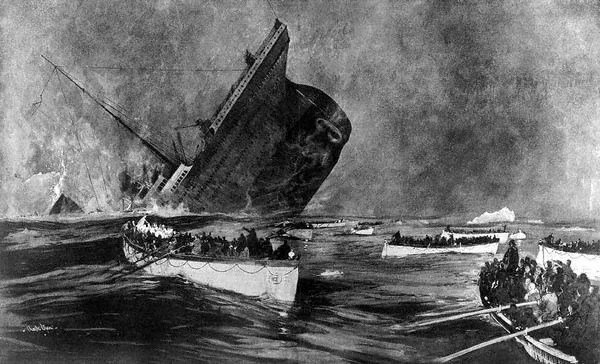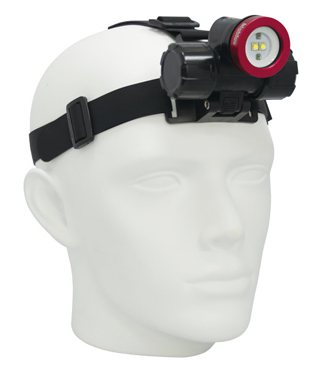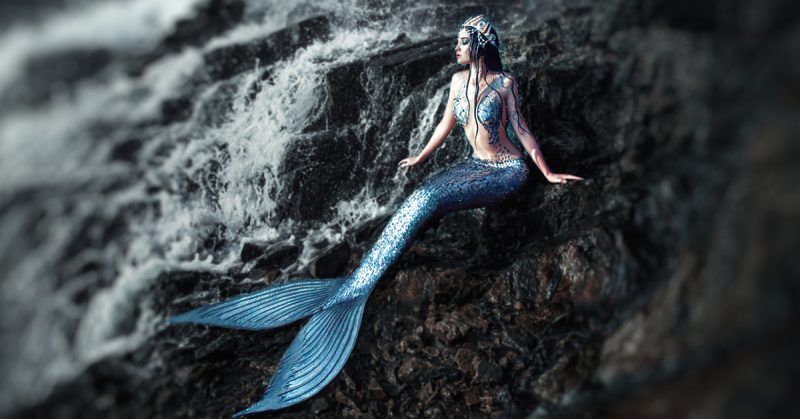
Well, I’ve finally done it. In a previous article I wrote about my lifelong ambition to go scuba diving and two weeks ago I found myself 12 metres down playing ‘tag’ with a lizard fish.
In case you didn’t read the earlier article, I’m a 44 year old, somewhat overweight but basically fit man who has a lingering fear of the water but who has wanted to Scuba Dive since watching Jacques Cousteau on TV as a small child. My plan had been to get trained in this country and then do my first dive abroad under the PADI (Professional Association of Diving Instructors) scheme where you can split your training across dive centres. Circumstances overtook me and it didn’t happen that way at all.
Three weeks ago my partner and I had the opportunity to jet off to Gran Canaria for a short break and to my simultaneous delight and horror, I discovered the Cordial Mogan Playa (the hotel we were staying at) had recently opened a dive centre in the grounds. Years ago, my daughter (then 10 and a strong swimmer from all the lessons I took her to) taught me to swim at a local pool, simply by saying “go on daddy, just push off and swim.” The idea of my daughter watching me wimp out overcame my lifelong fear of the water so I pushed off and, to my astonishment, I discovered I could actually swim (by which I mean not drown too much)! In a similar way, finding a dive school on my doorstep with five days of no excuses and an expectant partner raising her eyebrow at me, I had little choice but to take the plunge so I found myself in the dive centre booking up for an introductory session.
This centre (part of the Extra Divers group) offered SSI (Scuba Schools International) courses rather than the PADI courses I had previously looked at but the basic pattern of training looked much the same and I had heard of SSI before, so I booked up for the half-day “Try Scuba Diving” course at a cost of the equivalent of about 60 GBP.
My instructor for the course was Carlos who had excellent English (I try but my Spanish goes not much beyond ordering coffee). Reassuringly, Carlos turned out to be an ex-military diving instructor and local expert on dive safety, so I knew I was in good hands.
The first part of the course was classroom based and one-to-one, where Carlos taught me about basic techniques and safety issues such as pressure equalisation, illustrating its importance by running through the calculations based on bars and depth in metres. He did a wonderful job of tying the theory to practice by letting me calculate the sort of thing that would happen to my ear drums if I dived to 20 metres without equalising as well as what would happen to my lungs if I surfaced from 20 metres while holding my breath (in both cases, the short answer is “bang!”).
From there we moved into the pool and, suitably kitted out, I got my first taste of breathing underwater. Apart from the exercises (mask clearing, retrieving a dropped regulator, and basic buoyancy control) I can’t describe the thrill of my first go at diving. Initially, like most first timers, my concentration was on breathing but I soon learned to trust the equipment and switch over to thinking about how my lung inflation was affecting my buoyancy and using this to make brief buoyancy corrections while adjusting the inflation of my BCD (buoyancy control device or “jacket” as Carlos called it). On about the third go round I was able to swim round the deep end of the pool holding a steady 2-3 feet from the bottom and could switch over to thinking about how I was using the fins. Carlos had pointed out that the aim is to use leisurely rather than frantic effort to conserve air, so I slowed down my finning speed, straightened out my legs and found myself smoothly cruising through the water and able to look around. This was the moment when it hit me that I was finally doing it – I was scuba diving, looking up at the underside of swimmers and motoring along with a level of comfort that, while I could not afford to be arrogant or lax, allowed me to feel that I was here, I was doing it and this was my space to explore.
The final part of training was a dive in the sea and for this we were joined by a couple of excited school girls from Germany doing their next level of training. We drove round to Amadores beach at Puerto Rico on the South-West coast of Gran Canaria, a popular crescent-shaped beach in a cove protected by two rocky jetties. Getting kitted up provided the opportunity for another lesson in equipment and safety checks (I must remember to lie my cylinder back down after connecting the regulator), then Carlos took us through the hand signals for the dive and finished by jokingly telling us he would permit “no mistakes” as we were diving in front of a rival dive school here. Walking down to the beach through the crowd of sunbathers was a thrill, as heads turned towards us and I could almost hear the thoughts of “damn, wish that was me” that were behind some of the envious glances.
I must confess I was a little clumsy both at getting into and out of the water, in fact I trod on my own flipper on the way out and fell over into the surf, but Carlos tells me this is not unusual and you get less clumsy with practice, so I guess this was a forgivable mistake. Entry to the water was from the beach and initially the water was so cloudy with sand that I had to hang on to Carlos’ BCD to make sure I didn’t get lost. Once we were in, though, all I can really say is wow!
We worked our way down the stepped sand banks, dotted with eroded volcanic rocks, to a depth of about 12 metres. While he kept checking on me and included me in the underwater exercises (more mask clearing and regulator retrieval), Carlos’ main concern was to keep an eye on the children and this left me free to explore while keeping close by. We swam gradually deeper until I had my first aquatic encounter, which was with a lizard fish. I hadn’t noticed it until I was about 2 feet away, when it startled from its almost buried or well camouflaged position in the sand. It darted a few feet ahead and as this was on our course I kept on swimming. This turned into a magical game of ‘tag’ where I would swim to within a foot or two of the fish and it would dart ahead again. After three of four goes at this, Carlos signalled we were turning to the right so I had to leave my gilled friend behind and follow along.
This wasn’t my only encounter with the denizens of the deepish. Further along, while going knees down on the sea bed for an exercise I managed to disturb a hidden flatfish that made me jump. Later, as we were in the deepest part of the dive, Carlos found a couple of cute little cuttlefish, one of which seemed quite happy to hover above his outstretched hand as the girls tickled it. I am not sure how long we were down, enough to exhaust my tank down to 110 bars before we turned back to the beach, but it felt like an age. Hanging on to Carlos’ BCD once again, we ascended through the submerged sand storm and arrived back at almost exactly the spot from which we had entered. Flippers off and out of the water, I may have felt good coming down the beach but going back up I felt on top of the world – I had finally done it – I might still have a lot to learn but I could at last say I had been scuba diving.
Of course scuba divers need to know how to look after their gear so once we returned to the dive school, the final part of my lesson was rinsing off and packing away the gear I had used before saying goodbye to the girls and thanking Carlos for his encouragement, training and stewardship. He’s an excellent instructor and I cannot recommend him highly enough.
Experienced divers would no doubt be completely unimpressed by what this dive offered but I’ve heard before that you never forget your first dive and I would have to go along with this. This first dive gave me the opportunity to enjoy the richness, thrill and feelings of freedom and achievement that you get when exploring the undersea world. Since then I’ve read a few dive magazines and seen the amazing sights and experiences on offer throughout the world on reefs and wrecks. Because of the SSI web registration system, I can continue my training at any SSI dive center in the world so I don’t know where my next dive will be. What I can tell is that there will definitely be a next dive, and soon. Scuba diving is everything I expected it to be and more, and no matter what happens next I am sure I will never forget the thrill of that wonderful first dive.
Apart from hoping he’s not getting out of his depth with this scuba diving stuff, Richard Atkins is a former lecturer, computer programmer and nowadays an occasional writer. If you are interested in trying out scuba diving, you can find taster sessions through to shark diving experiences on our scuba diving experience days page, and other aquatic sports on our water sports experience days page at FindExperienceDays.com.
Article Source: https://EzineArticles.com/expert/Richard_Atkins/61632
Article Source: http://EzineArticles.com/3200632






Leave A Comment